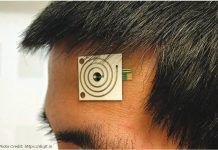
When I thought I saw all in the field of cleaning, I found out that a team of German scientists at FAU – Friedrich-Alexander University from Nürnberg, Germany have completed a new method for mechanical cleaning of surfaces at nanoscale.
Their technique removes even the tiniest contaminants down to the atomic scale, performing a cleaning to an unheard level of cleanliness.
The leader of this study, Dr. Erdmann Spiecker professor in the Department of Materials Science at FAU recently published the results of his study in the journal Nature Communications, which is an international weekly prestigious journal of science, first published in 1869, and now having offices in cities worldwide.
The smallest broom you can imagine
Daily life has inspired researchers to use in the same way a broom for this type of cleaning. For a nanoscale cleaning, as normal the tool had to be proportionally reduced in scale, finally reaching a dimension of a bristle with a small metal tip.
This brush is moved above the surface to be cleaned, back and forth, as if you brush it, to remove the particles that need to be cleaned. Of course, at this scale, the brush is controlled by a joystick that moves a piezoelectric motor. Also to better monitor and control the nanoscale cleaning process in real time, powerful electron microscopes are used.
Cleaning the thinnest window from the world
As graphene is made of a single atomic layer of carbon, it is the thinnest material in the world. Cleaning graphene on both its sides, means that the researchers managed to apply the brushing technique to this thinnest material, just like when clean a house window panel.
By using electron microscopes they have to look through the material, in order to see the atomic structure. Graphene is well known for its mechanical strength, but it is highly surprising that a monoatomic layer can face to a such high mechanical force in a cleaning procedure without being affected or destroyed.
Nanoscale dust: Nothing stays clean in itself
Now the study has gone to another level. Having atomically-clean surfaces, the researchers have got the chance to begin to explore the origins and mechanisms of re-contamination at the nanoscale. After a short time, letting a clean sample out in air, you will see a quick accumulation of dust on its surface, as we are already used to be on photography lens.
Normally this happens the same also at nanoscale says Prof. Spiecker. Besides the normal airborne contamination, they found a prevalence of surface diffusion when a cleaned specimen is put into a vacuum environment, a phenomenon that occurs also in scientific experiments.
Assembly atomically
Having a clean atomically surface as fundamental for a layer of molecular blocks, they applied porphyrin molecules on it and welded in place using a high powered electron beam, obtaining a graphene just like a monolayer with a nanocrystaline structure.
Instead of a conclusion
I do not know what impact this technological discovery will have on the technological future. For me, it only inspires at the use of DSLR cameras, whose CCD or CMOS sensor can now be cleaned by a very high piezo-vibration between 100 hertz and 50 kilohertz.
Maybe this way they will be able to create sensors that never get dirty.



